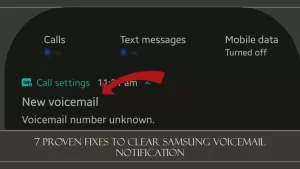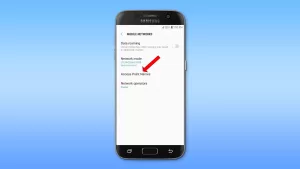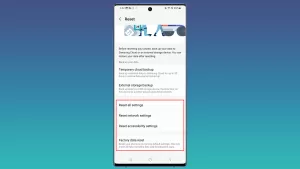When a premium device like the Samsung Galaxy S10 Plus starts to have a slow performance or become sluggish, you can almost expect that it’s due to a firmware issue, although we really can’t pinpoint what the problem really is. That’s when troubleshooting comes in handy. As an owner, the least you can do is to perform basic troubleshooting procedures to try and fix the problem or make it run faster and smoother as it should be.

In this post, I will walk you through in troubleshooting your Galaxy S10 Plus with slow performance. I will help you determine what the issue is so that we can formulate a solution that could make your phone work normally again. The Galaxy S10 Plus is a very powerful smartphone and it’s a shame if it falls prey to performance issues like this. So, continue reading as this article may be able to help you.
Before we move on to our tutorial, if you happen to find this post while looking for a solution to a different problem, then visit our Galaxy S10 Plus Help Guides page for we have already addressed some of the most common issues with this device. We may have already published articles that could help you fix your problem. Find issues that are similar with yours and feel free to use our solutions.
Fixing Galaxy S10 Plus with slow performance
Fixing a sluggish device is easy. You will just have to do some basic troubleshooting procedures to make it run again and that’s what I’m going to share with you here. With all that being said, here’s what you should do:
Run your phone in safe mode
Restarting your phone in safe mode doesn’t fix the problem per se but it will give you an idea as to what causes the slow performance issue. Specifically, this will tell you immediately if the cause of the problem is a third-party application or not. This is how you start your phone in safe mode:
- Turn the device off.
- Press and hold the Power key past the model name screen appearing on the screen.
- When SAMSUNG appears on the screen, release the Power key.
- Immediately after releasing the Power key, press and hold the Volume down key.
- Continue to hold the Volume down key until the device finishes restarting.
- When Safe mode appears in the bottom left corner of the screen, release the Volume down key.
- While in Safe mode, you can now uninstall apps that are causing a problem.
After you’ve started your phone successfully into this mode, the next thing you should do is observe your phone closely to know if the slow performance disappeared. Browse through your home screens, open apps, use features, change settings, or do anything that would tell you if your phone is running smoothly or not. Because if it does, then it means that there’s a third-party application that’s causing the problem.
Samsung Galaxy S10 Plus can’t send text messages. Here’s how to fix it.
Uninstall the app that’s causing the slow performance issue
If your Galaxy S10 Plus runs smoothly while in safe mode, this must be the next thing you have to do. Finding the app that’s causing the problem is a bit of a challenge but begin your search from apps you recently installed or those that you installed about the time the problem started. Uninstall suspected apps and then reboot your phone in normal mode for you to know if it still has a slow performance or if it started to run smoothly. Here’s how to uninstall an app:
- From the Home screen, swipe up on an empty spot to open the Apps tray.
- Tap Settings > Apps.
- Tap the desired application in the default list.
- To display preinstalled apps, tap Menu > Show system apps.
- Tap UNINSTALL > OK.
You may have to uninstall more than one app to fix this problem.
Delete the system cache to fix slow performance issue
Another common cause of performance issues is the corrupt system cache. Your phone creates temporary files for all services, features and apps. These files are used when you use those feature or apps and they actually make things better for your phone. However, when they get corrupted, that’s when problems like this may occur. To rule it out, you have to delete the system cache by wiping the cache partition so that the system will create a new cache to replace it. Here’s how it’s done:
- Turn off the device.
- Press and hold the Volume Up key and the Bixby key, then press and hold the Power key.
- When the Android logo displays, release all three keys.
- An ‘Installing system update’ message will show for 30 – 60 seconds before the Android system recovery menu options appear.
- Press the Volume down key several times to highlight wipe cache partition.
- Press Power key to select.
- Press the Volume down key to highlight yes, them and press the Power key to select.
- When the wipe cache partition is complete, Reboot system now is highlighted.
- Press the Power key to restart the device.
The phone will take a little longer to start up after this as it rebuilds the cache. But once it becomes active, use it like you always do to test if the slow performance got fixed. If it’s still slow and sluggish, try the next solution.
MMS won’t send on Samsung Galaxy S10 Plus
Reset settings to fix slow performance
This has an effect of a factory reset and all settings will be brought back to factory defaults but none of your files and data will be deleted. It’s very effective in fixing minor firmware issues, performance problems and other issues caused by incorrect configuration. There’s no guarantee of a fix but it’s surely worth a try. Here’s how…
- From the Home screen, swipe up on an empty spot to open the Apps tray.
- Tap Settings > General Management > Reset > Reset settings.
- Tap RESET SETTINGS.
- If you have set up a PIN, enter it.
- Tap RESET SETTINGS.
- The device will restart to perform the reset of settings.
After this procedure your Galaxy S10 Plus still has a slow performance or still sluggish in every way, then a reset is necessary.
Backup your files and reset your phone
At this point since everything else failed to fix the problem, a master reset is needed. If the slow performance issue is not caused by a hardware problem, then a reset will fix it. So, make sure to backup all your files and data as they will be deleted during the process. After which, remove your Samsung and Google accounts so you won’t be locked out of your device after the reset. Once everything is set and ready, follow these steps to reset your phone:
- Back up data on the internal memory. If you have signed into a Samsung account on the device, you have activated Anti-theft and will need your Samsung credentials to finish the master reset.
- Turn off the device.
- Press and hold the Volume Up key and the Bixby key, then press and hold the Power key.
- When the green Android logo displays, release all keys (‘Installing system update’ will show for about 30 – 60 seconds before showing the Android system recovery menu options).
- Press the Volume down key several times to highlight ‘wipe data / factory reset’.
- Press Power button to select.
- Press the Volume down key until ‘Yes — delete all user data’ is highlighted.
- Press Power button to select and start the master reset.
- When the master reset is complete, ‘Reboot system now’ is highlighted.
- Press the Power key to restart the device.
I hope that we’ve been able to help you fix the problem with your device. We would appreciate it if you helped us spread the word so please share this post if you found it helpful. Thank you so much for reading!
RELEVANT POSTS:







